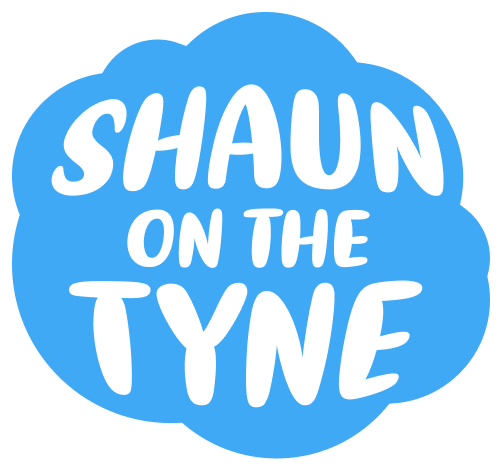Homeowners are becoming more and more alarmed by their NYC property tax bills in every borough, from the bustling rooftops of Williamsburg to the green lanes of Riverdale. Despite the document’s apparent simplicity—just columns and line items—deep inequalities, intricate formulas, and shifting city priorities are hidden behind the numbers. For many people, particularly those who have lived in gentrifying neighborhoods for a long time, the numbers are increasing more quickly than their income or inflation, and clarity is rarely included in the package.
Residents can use the online resources provided by the NYC Department of Finance portal to check the assessed market value of their property, apply for property tax exemptions, and view their bill history. Although the portal’s design is functional, novice users still have to navigate a confusing array of drop-down menus. The account dashboard provides a consolidated view of obligations, overpayments, and abatements—if any have been granted—which is especially helpful for people with multiple units or co-ops.
Automation has become more prevalent in bill generation in recent years, which has simplified operations but also irritated users who now have to deal with automated audits that are prone to errors. Owners like Luis, a retired Queens schoolteacher, reported that his quarterly tax bill almost doubled after a routine exemption was “inexplicably removed.” These tales are remarkably similar for all demographics: working parents, senior citizens, and even recent tech hires in Brooklyn co-ops are negotiating the same maze.
| Detail | Description |
|---|---|
| Billing Schedule | Quarterly or semi-annually |
| Payment Options | Online (bank transfer free, card with fee), mail (check/money order) |
| Online Services | Bill payments, balance checks, exemption applications, audit case resolutions |
| Property Lookup | By address or BBL (borough-block-lot) |
| Early Payment Discount | Available if payment is made on or before due date |
| Credit Cards Accepted | Visa, MasterCard, Discover, American Express |
| Payment Mailing Address | NYS Assessment Receivables, PO BOX 4127, Binghamton NY 13902-4127 |
| Website for Reference | NYC Department of Finance |
A noticeably kinder policy window permitted postponed payments and suspended penalties during the pandemic. However, thousands of owners say they were taken by surprise since emergency measures were relaxed. For those who are reluctant to register online, the city now provides a Quick Pay option. This option is incredibly efficient for flippers and landlords who are rushing against development timelines, providing quick access with little red tape. For older payers, who frequently send checks to the Binghamton processing center weeks in advance simply to avoid online confusion, the traditional mail route is still the backup option.
The Department has launched tools that are much faster and more transparent than previous versions thanks to strategic partnerships with financial institutions and user feedback loops. However, the tax system’s fundamental structure, which is based on classifications from the 1980s, has not changed much. Because residential properties are subject to different tax classes that are frequently unrelated to current usage, co-ops pay higher taxes than nearby brownstones. The consequences of this discrepancy are especially noticeable in neighborhoods that are changing quickly, such as Harlem and Long Island City.
These hikes feel harsh to families like the Harpers in Staten Island who have occupied the same house for many generations. Once taxed affordably, their modest two-story home now has a tax bill that is three times higher than it was fifteen years ago. Although beneficial, the Senior Citizen Homeowners’ Exemption necessitates reapplication and paperwork that seems more bureaucratic. Many people who are not accustomed to using online forms have said that the process is very unclear.
The NYC tax bill is more than just a financial commitment in the context of larger housing policy; it also conveys the city’s value system. Teams of advisers protect celebrities like Jerry Seinfeld, a longtime Upper West Side resident, and Neil Patrick Harris, who owns historic Harlem property. However, the typical New Yorker must decipher the tax bill on their own, line by line, frequently without expert assistance. It’s an unjust comparison that reflects wider economic disparities.
Since the annual Notice of Property Value (NOPV) was introduced, more citizens have started to examine their bills in advance. The estimated market value and anticipated taxes of a property are described in this letter, which is delivered every January. Comparing the NOPV with their actual billing statement several months later has been especially helpful for a lot of people. Some have appealed and had their assessments lowered by acting quickly, but it has been a laborious process. Despite being accessible and lawful, the appeals process is not used as much as it could be because it is hidden among the city’s less well-known processes.
Traditional rental properties have given way to hybrid models in NYC real estate investments over the last ten years, including live/work spaces, short-term Airbnb units, and even loft flips financed by cryptocurrency. However, the formula for property taxes has hardly changed. It is now crucial for developers and small-scale flippers to comprehend the complexities of tax classification. For instance, incorrectly classifying a building during a conversion may result in thousands of needless fines.
The largest obstacle for early-stage homeowners, such as first-time purchasers in East New York or Elmhurst, is frequently not the mortgage but rather comprehending what the tax bill indicates. It covers past due amounts, audit adjustments, and possible early payment discounts, but it rarely uses the kind of incredibly straightforward language one would anticipate from a government agency to explain these concepts. Although local borough offices host helpful community workshops, few people attend, particularly working families who are juggling several jobs.
Political pressure to change the structure is expected to increase in the upcoming years. In order to better reflect actual property usage and income levels, a number of city council members have proposed simplifying the classification system and modifying rates. Proponents propose a progressive model that has already been tested in other major cities: tying tax rates to household incomes. The objective was to greatly lessen misunderstanding and increase equity among boroughs.
By drawing attention to systemic inconsistencies, New Yorkers are starting to view their tax bills as instruments of civic influence rather than inevitable annoyances. Discussions are changing. Co-op boards are asking financial analysts to break down assessments at meetings, and grassroots networks are sharing guidance on exemption forms. Residents are learning to contest the bill because paying it is no longer sufficient.

